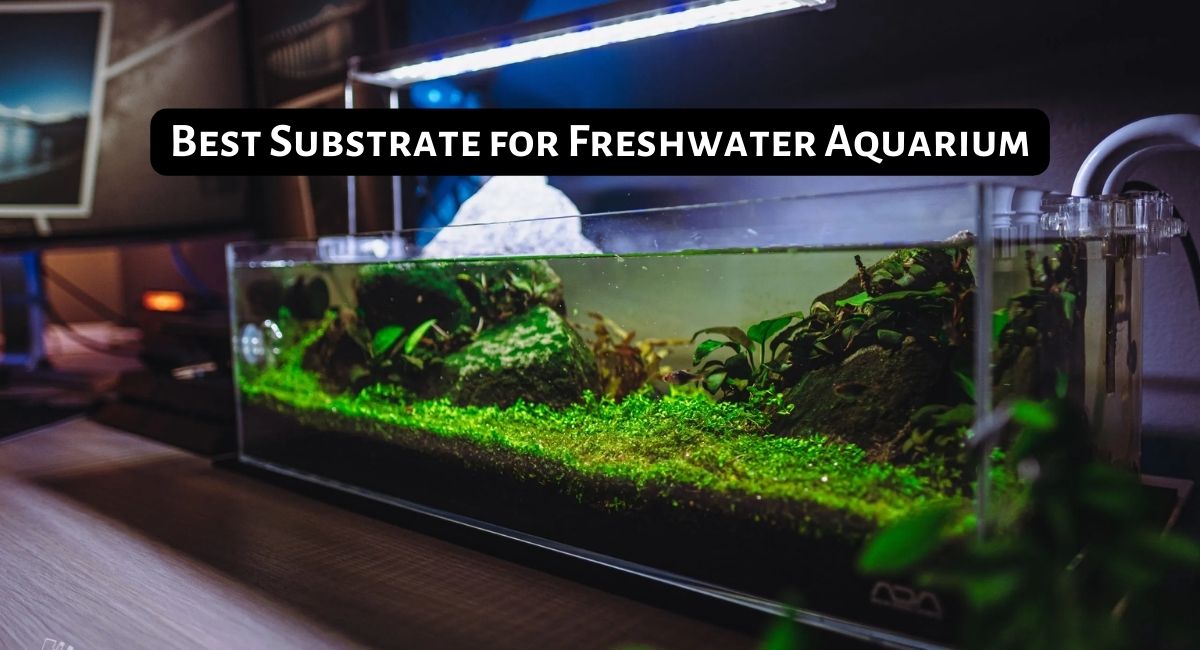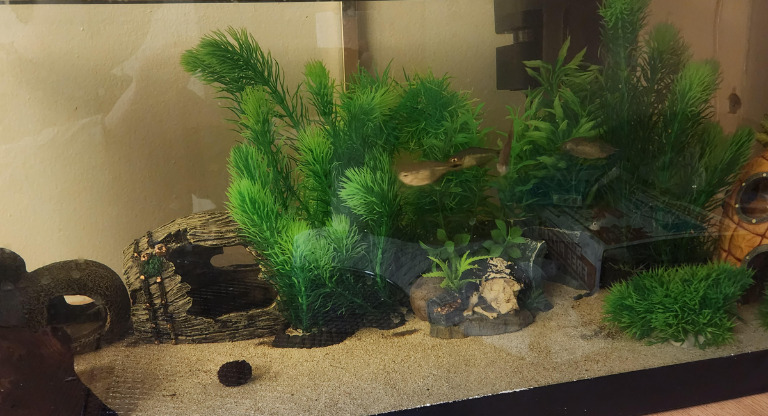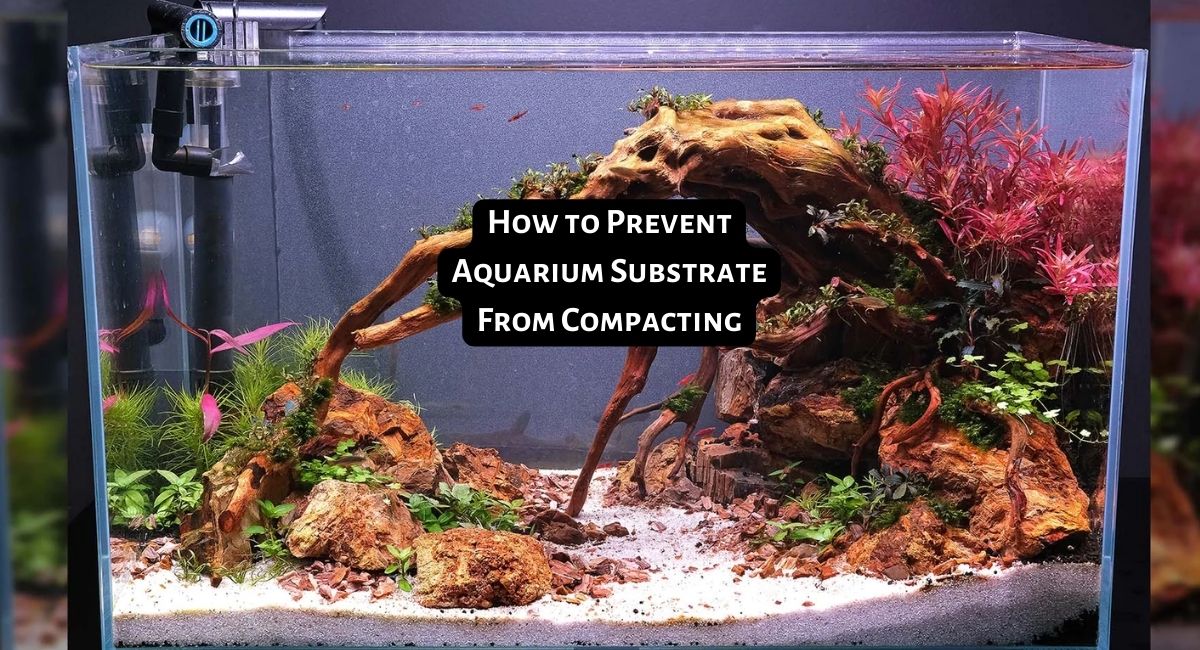Smartplantedaquarium.com participates in affiliate marketing programs. We may earn commissions on purchases made through our affiliate links. This doesn't affect our content or recommendations and we only recommend products we would put in our own tanks.
Welcome to the blog on Best Substrate for Freshwater Aquarium! Having a freshwater aquarium is a rewarding and enjoyable experience. However, in order to maintain your fish’s health and well-being, it’s important to choose the right substrate. In this blog we will discuss the different types of substrates available, their benefits and drawbacks, as well as tips for selecting the best one for freshwater aquarium. Armed with this knowledge, you can make an informed decision about which substrate to use in your freshwater tank. Let’s get started!
TL;DR
When choosing the best substrate for a freshwater aquarium, it’s important to consider factors like your fish type and budget. Natural gravels are usually preferred over eco-friendly alternatives due to their superior look and overall better value. Sand is an option but requires more regular maintenance than gravel. A good rule of thumb is to pick the substrate that will provide the most benefits for your tank inhabitants. With careful consideration, you can create a beautiful and healthy aquatic environment for your fish to thrive in!
Contents
- Best Substrate for Freshwater Aquarium
- Conclusion
- Frequently Asked Questions (FAQs)
Best Substrate for Freshwater Aquarium
When it comes to selecting the best substrate for your freshwater aquarium, there are several factors to consider. In this blog we will discuss these considerations and give advice on choosing the right substrate for your tank. We will also discuss the various types of substrates available in the market and their uses, so you can make an informed decision about which one is best for your fish tank. So let’s dive into it!
How to Choose Substrate for Freshwater Aquarium?
Aquarium substrates are essential components of any aquatic environment. They provide a surface area on which beneficial bacteria can grow and help maintain water chemistry parameters such as pH and alkalinity. Additionally, they also provide a base for decoration and serve as homes for beneficial organisms such as worms and other critters.
What are the Best Substrates for Planted Freshwater Aquariums?
When it comes to setting up a planted freshwater aquarium, the substrate is an important factor to consider. The type of substrate you choose can have a major impact on the look and health of your tank. But with so many different substrates on the market, it can be difficult to decide which one is best for your aquarium.
The two main types of substrates for planted freshwater aquariums are inert and active substrates. Inert substrates are usually cheaper and easier to find, but they do not provide enough nutrients or support for healthy root systems and aquatic plants. Active substrates like aquasoil contain more beneficial bacteria and organic materials that help create ideal living conditions for rooted aquatic plants.
When it comes to the best substrate for a planted freshwater aquarium, there are several options available. Here is a list of some of the top choices that aquarists have been using to create stunningly beautiful aquatic setups:
- Gravel: A classic choice for many tanks, gravel helps keep water clear and provides an excellent foundation for plant growth. It also allows beneficial bacteria to colonize, further helping maintain good water quality.
- Sand: Provides an aesthetically pleasing base for plants and other decorations in the tank. Sand is more inert than gravel and does not contain as many nutrients necessary for healthy plant growth; however, fertilizers can be used to supplement nutrient levels if needed.
- Soil: Soil contains higher levels of nutrients than sand, making it an ideal choice for planted aquariums. It is important to choose soil specifically intended for aquarium use in order to avoid introducing unwanted chemicals and organisms into the tank.
- Clay Pebbles: A lightweight substrate that allows for better oxygenation of roots and helps provide a sturdy foundation for plants without getting too compacted over time. Also helps maintain good water quality by providing beneficial bacteria with surfaces to colonize on.
- Man-Made Substrates: There are several different types available, including those made from ceramic, plastic, or polypropylene materials. These substrates are designed to be inert and free from any potential contaminants or pollutants; however, they are generally more expensive than other substrate types.
No matter what type of substrate you choose for your aquarium, it is important to make sure that it is compatible with the fish and plants in the tank. It may be beneficial to research different substrates and their effects on specific aquatic species before making a final decision. With careful consideration, you can find the best substrate for your planted freshwater aquarium!
Are you struggling to choose the right substrate for your planted aquarium? Look no further than our step by step guide to choosing aquarium substrate. Our guide provides detailed information on the benefits of different types of substrate and step-by-step instructions for setting up your aquarium. Plus, we offer tips for creating a beautiful and healthy ecosystem for your fish and plants. Check it out today!
How Much Substrate is Required for a Freshwater Aquarium?
One of the most important considerations when choosing the best substrate for a freshwater aquarium is how much to use. Substrate should be added in layers on the bottom of an aquarium, starting with a layer of gravel and then adding sand or other materials as desired. The amount of substrate needed will depend on several factors, including fish type, tank size, and water depth. Generally speaking, a minimum depth of 2 inches (5 cm) is recommended for most tanks up to 40 gallons (151 liters). For tanks larger than that, 3 to 4 inches (7.6 to 10 cm) is typically ideal.
Adding Substrate to Your Freshwater Aquarium – Do’s and Dont’s
When it comes to setting up the perfect freshwater aquarium, one of the most important components is selecting the best substrate. Substrates are used to provide a decorative bottom layer for an aquarium and can help with water filtration, aeration and growth of beneficial bacteria. Different substrates have different benefits and drawbacks so it’s important to do your research before settling on a substrate for your tank.
| Do’s | Don’ts |
|---|---|
| Choose substrate based on size, species, and purpose of the tank. Larger tanks need coarse substrates, while smaller tanks benefit from finer ones. | Do not use sand substrates in tanks with live plants, as they can cause root decay due to lack of oxygenation. |
| Select a substrate that does not affect the pH level of the aquarium. | Avoid using gravel or sedimentary rock if housing bottom dwellers such as loaches or catfish, as they may create an unstable environment. |
| Choose a substrate that contains beneficial minerals and nutrients for aquatic life and plants. | Do not use any substrate containing sharp edges as they may cause injury to your fish. |
| Clean the substrate thoroughly before adding it to the aquarium to remove dust particles and fish diseases. | Do not forget to rinse the substrate thoroughly before adding it to the aquarium to prevent clouding of the water and ensure that no dust or dirt is present. |
If you’re serious about creating a beautiful and successful planted aquarium, you can’t afford to ignore the importance of substrate. The right substrate not only supports your plants, but also provides essential nutrients and helps maintain water chemistry. To make sure you’re using the best substrate for your aquarium, read our expert guide on the best substrate for planted aquarium.
Difference Between Freshwater Substrate and Saltwater Substrate
Freshwater and saltwater aquariums have distinct requirements for substrate. Freshwater substrates are meant to maintain a neutral pH, while saltwater substrates aim to maintain a higher pH. The type of substrate you use impacts the health of your tank inhabitants.
| Substrate Type | Purpose | Examples | Benefits |
|---|---|---|---|
| Freshwater | Maintain neutral pH | Gravel, sand, clay, eco-complete | Inert, non-toxic, provide beneficial bacteria, keep water clean and clear |
| Saltwater | Maintain high pH | Aragonite, coral sand | Acts as alkalinity buffer, maintains optimal water quality, creates natural habitats, promotes healthy growth of live rock colonies |
Freshwater Substrate
In freshwater aquariums, substrate must be inert and non-toxic to ensure that it doesn’t affect water chemistry or pH balance. Common freshwater substrate options include gravel, sand, clay, and eco-complete substrates made from plant matter. These products provide beneficial bacteria that help maintain water quality by breaking down waste materials. Sand is often regarded as the best substrate for freshwater aquariums as it creates an ideal environment for beneficial bacteria to colonize, keeping water clean and clear.
Saltwater Substrate
In saltwater aquariums, substrates are meant to maintain a higher pH environment. These substrates usually contain aragonite and/or coral sand, which act as an alkalinity buffer, helping to maintain optimal water quality. Saltwater substrates also create natural habitats by providing hiding places for coral and other tank inhabitants, promoting the healthy growth of live rock colonies.
Conclusion
Choosing the right substrate for your freshwater aquarium is crucial to maintaining a healthy and thriving environment for your aquatic pets. While there are several options to choose from, sand is often considered the best substrate for freshwater aquariums.
Not only is it inert and non-toxic, but it also provides an ideal environment for beneficial bacteria to colonize, keeping your tank water clean and clear. Plus, sand is great for bottom-dwelling fish and can add a natural aesthetic to your tank.
So, if you’re setting up a freshwater aquarium or considering changing your substrate, give sand a try and see the difference it can make for your aquatic pets!
Whether you’re a seasoned saltwater aquarium enthusiast or just getting started, our guide to best substrate for saltwater fish tank is an essential resource for creating a beautiful and healthy underwater world.
Frequently Asked Questions (FAQs)
1. What is the best substrate for freshwater tanks?
The best substrate for freshwater tanks is arguably sand or gravel. Sand gives the tank a more natural look, while gravel provides beneficial bacteria and is easier to clean. Both substrates can provide an ideal environment for your fish and plants, so it really comes down to personal preference. Additionally, adding some rocks or driftwood can create interesting accents and further enhance the tank’s appearance.
2. Is sand or gravel better for freshwater aquariums?
It depends on the type of freshwater aquarium. Generally, sand provides a more natural look and is a better substrate for planted tanks, while gravel is more commonly used in more traditional/non-planted tanks as it provides additional filtration. However, both are suitable options and can be used in any type of freshwater aquarium with the right preparation. Additionally, there are many other substrate materials available that may provide even better results depending on the tank’s needs.
3. What substrate is easiest to clean?
The easiest substrate to clean in a freshwater aquarium is gravel or sand. Gravel provides good filtration and can be easily vacuumed or siphoned when cleaning the tank. Sand is also easy to clean with a siphon, and you don’t have to worry about vacuuming it as much because it does not get caught up in the filter like gravel can. Both of these substrates are relatively inexpensive, making them an ideal choice for new aquarium hobbyists. They also provide plenty of space for beneficial bacteria and aeration that promote healthy water conditions. Additionally, they both come in many colors, allowing you to customize your aquarium’s look according to your preference.






